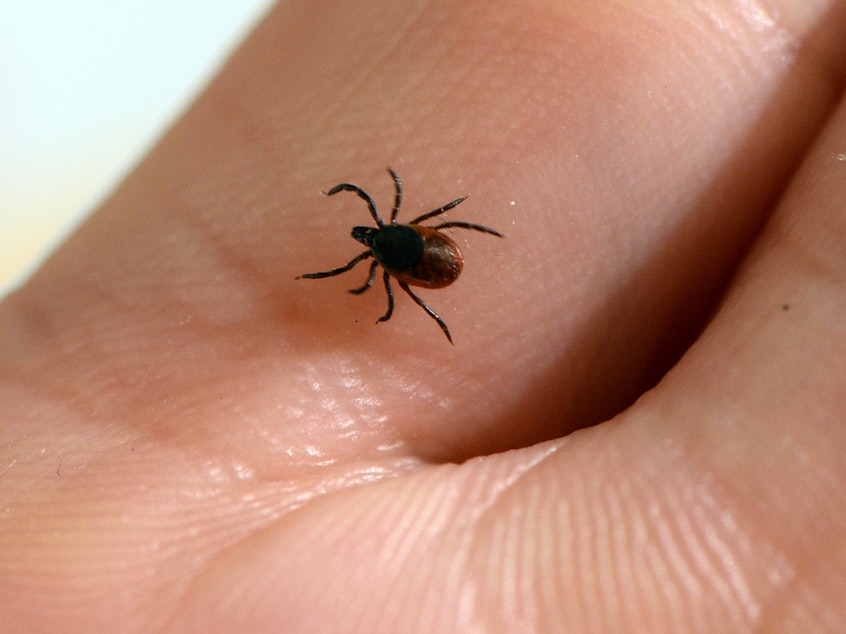A vaccine for Lyme disease is in its final clinical trial

Ticks that carry Lyme disease have been on the march, spreading into more forests and brush areas around the U.S. and Europe. But lovers of the outdoors could get a new weapon against Lyme, if a new vaccine candidate performs well. It aims to protect people as young as five.
If it were to gain regulators' approval, it would become the only Lyme disease vaccine available for humans in the U.S. But it's expected to take years for the potential vaccine to reach the market. If the phase-three study is a success, the companies say, they would likely seek official authorization in 2025.
The new vaccine is called VLA15, and as of this week, it's now in the third phase of a clinical study in humans. It was created by Pfizer and French drugmaker Valneva.
"We are extremely pleased to reach this important milestone in the development of VLA15," Valneva's chief medical officer, Juan Carlos Jaramillo, said in a statement. "Lyme disease continues to spread, representing a high unmet medical need that impacts the lives of many in the Northern Hemisphere."
U.S. consumers once had access to a human Lyme disease vaccine, called LYMERix, but it was withdrawn from the market 20 years ago. The vaccine had fairly high efficacy, but some users blamed it for adverse reactions, including arthritis. As the National Institute of Allergy and Infectious Diseases notes, "analysis by the FDA and others did not support that conclusion" — but use of the vaccine plummeted, leading to it being discontinued. There is, however, a vaccine on the U.S market for dogs.
The new human vaccine candidate works in a way that's similar to LYMERix, targeting an outer surface protein of the Borrelia bacteria that cause Lyme disease. But VLA15 omits a protein region "that some had attributed to adverse events," according to the NIAID.
The study that's now underway includes some 6,000 participants in the U.S. and Europe who are at least 5 years old and who live in places where Lyme disease is "highly endemic," Pfizer and Valneva say.
The vaccine candidate provoked a strong immune response in adults and kids in earlier trials, "with acceptable safety and tolerability profiles," according to the drug companies.
Aside from the potential vaccine, another weapon against Lyme is also in the works: a monoclonal antibody developed by MassBiologics, which is part of the University of Massachusetts Medical School. The first phase of human trials for the antibody is expected to conclude this month, with a second phase likely starting next spring.
Lyme disease is spread by black-legged ticks. Climate change and deforestation are among the human-caused factors that have increased the range of the arachnids. The removal of predators that control populations of deer and mice, two animals that carry Lyme, also has helped the disease spread.
People face a greater risk of Lyme disease if a tick remains on their skin for a prolonged period, leading experts to urge people to check themselves for ticks after spending time outside, particularly in areas where Lyme is known to be a threat.
Early Lyme symptoms can include a fever, headache and a circular rash that can resemble a bull's-eye, according to the CDC. Later symptoms can include joint pain, facial palsy and inflammation of the brain and spinal cord. The disease can be treated with antibiotics, especially in its early stages. Some people have been known to develop persistent symptoms, such as pain, fatigue and an inability to focus. [Copyright 2022 NPR]
